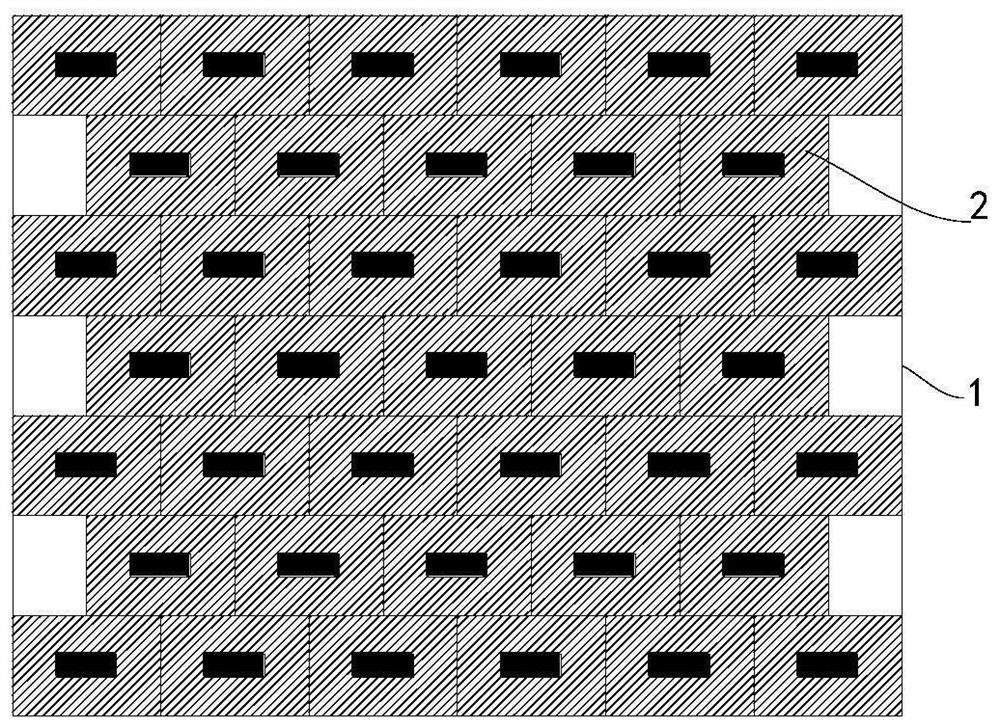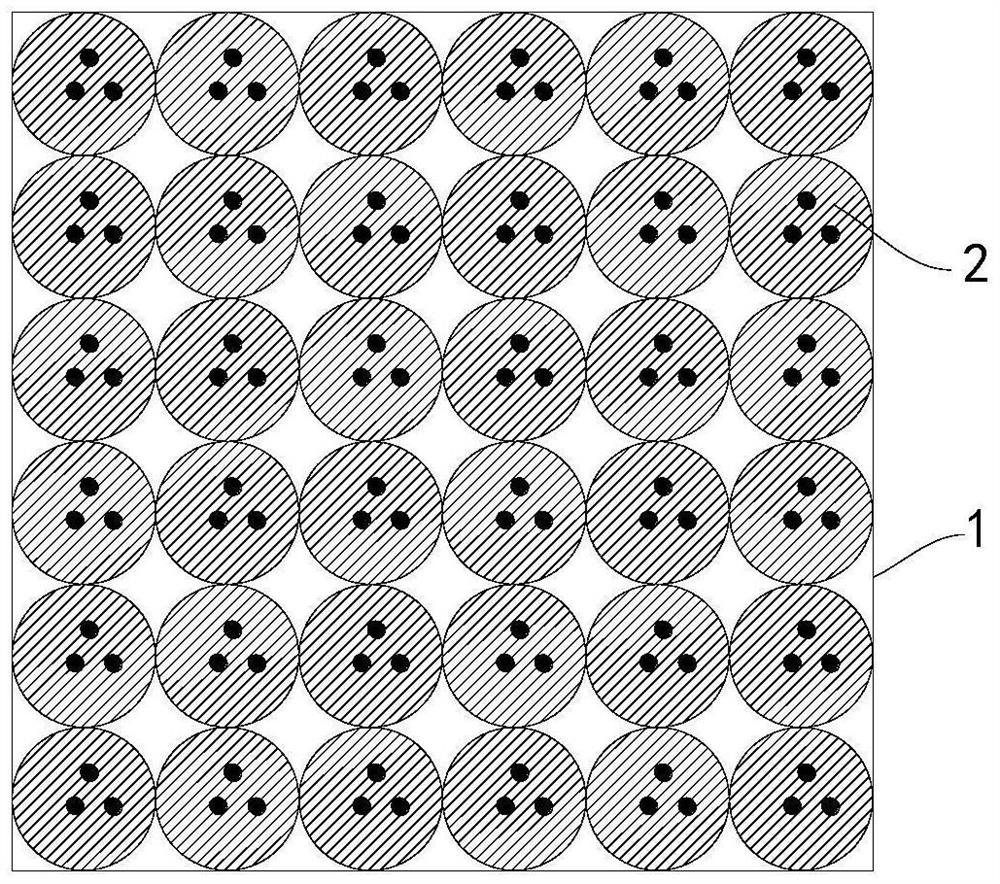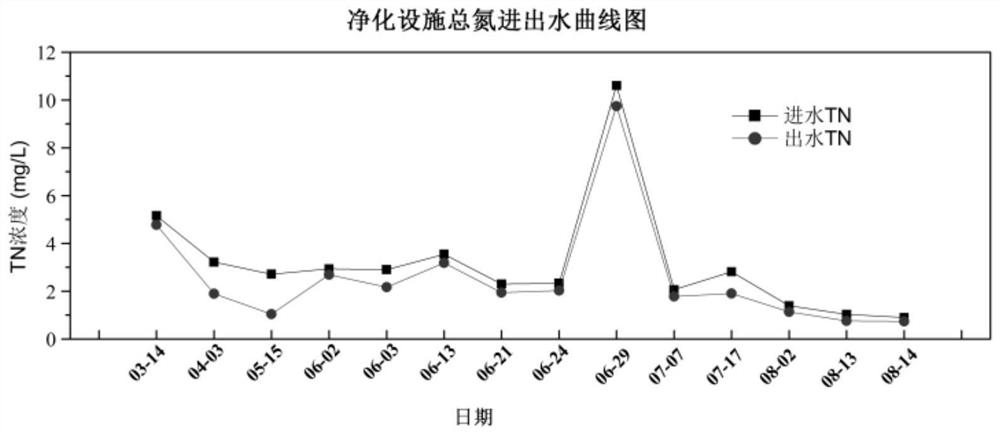Nitrogen and phosphorus removal composite filler and purification device containing same
A composite filler, nitrogen and phosphorus removal technology, applied in the field of water treatment, can solve the problems of system blockage, short service life, difficult to achieve stable total nitrogen removal rate, etc., to achieve the effect of removing pollutants
- Summary
- Abstract
- Description
- Claims
- Application Information
AI Technical Summary
Problems solved by technology
Method used
Image
Examples
Embodiment 1
[0049] A nitrogen and phosphorus removal composite filler, including: lignocellulose, metal substances, oligosaccharides and biological enzymes; usually, metal substances are distributed in the center of the nitrogen and phosphorus removal composite filler. The composite filler can be prepared into square fillers and spherical fillers according to actual use requirements.
[0050] The square packing includes: a cubic shell and a composite packing for nitrogen and phosphorus removal filled in the cubic shell; the cubic shell has holes.
[0051] The spherical filler includes: a spherical shell and a composite filler for nitrogen and phosphorus removal filled in the spherical shell; the spherical shell has holes, that is, it is hollowed out as a whole.
[0052] Among them, the role of lignocellulose is: as a slow-release carbon source and a membrane carrier, it can release organic matter as an electron donor for denitrification by denitrifying bacteria under the soaking of water ...
Embodiment 2
[0057] This embodiment is a further optimization carried out on the basis of embodiment 1, which is specifically:
[0058] The ratio of lignocellulose, metal substances, oligosaccharides and biological enzymes is 100:(50-4):(0.1-2.5):(0.005-0.02).
Embodiment 3
[0060] This embodiment is a further optimization carried out on the basis of embodiment 1 or 2, which is specifically:
[0061] Lignocellulose is the main component of plant cell walls, lignocellulose includes: cellulose, hemicellulose and lignin;
[0062] The proportion of cellulose, hemicellulose and lignin is (3-6): (2-5): (1-3);
[0063] Sources of lignocellulose are: wood, bamboo, wheat straw, corn straw, corn cob, bagasse, etc.;
[0064] Among them, wood includes rotten wood, and products or waste produced from raw wood;
[0065] Bamboo is a product or waste processed from raw bamboo;
[0066] Wheat stalks, corn stalks, corn cobs, bagasse, etc. are agricultural wastes;
[0067] The shape of the lignocellulose can be: fine powder, granular, filamentary, massive and other shapes.
PUM
| Property | Measurement | Unit |
|---|---|---|
| diameter | aaaaa | aaaaa |
Abstract
Description
Claims
Application Information
 Login to View More
Login to View More - R&D
- Intellectual Property
- Life Sciences
- Materials
- Tech Scout
- Unparalleled Data Quality
- Higher Quality Content
- 60% Fewer Hallucinations
Browse by: Latest US Patents, China's latest patents, Technical Efficacy Thesaurus, Application Domain, Technology Topic, Popular Technical Reports.
© 2025 PatSnap. All rights reserved.Legal|Privacy policy|Modern Slavery Act Transparency Statement|Sitemap|About US| Contact US: help@patsnap.com



